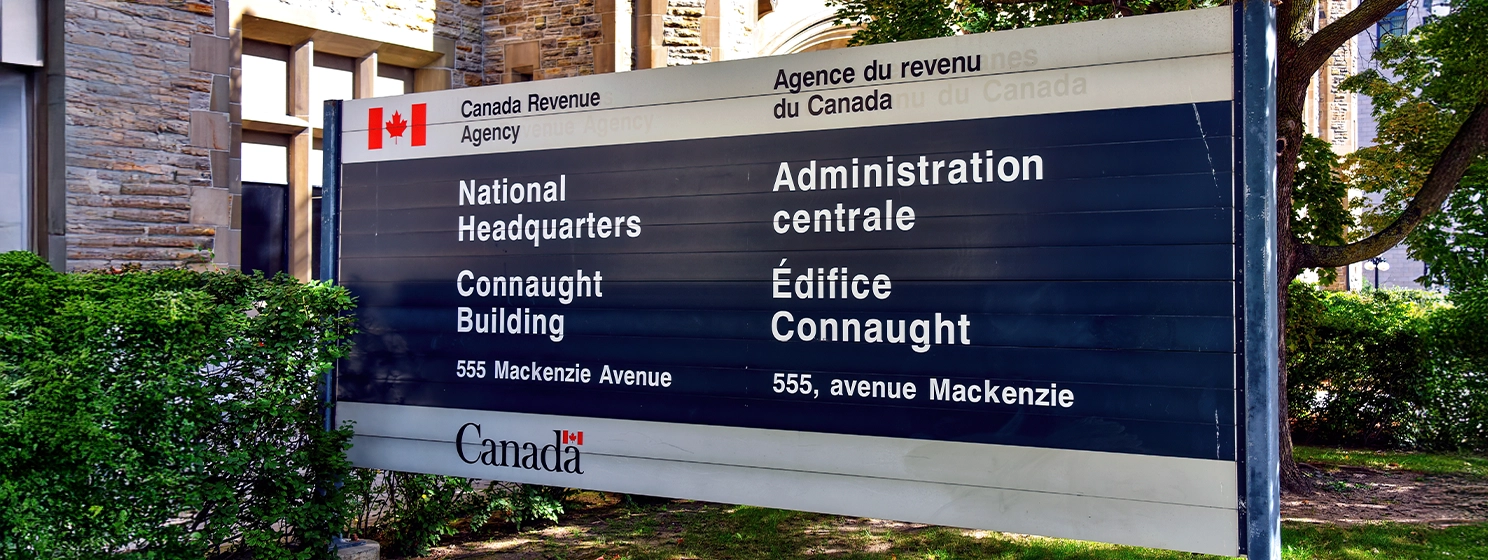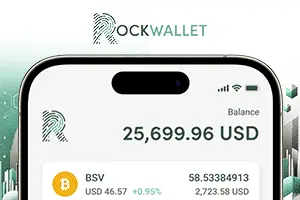|
Getting your Trinity Audio player ready...
|
A U.S. House of Representatives committee has advanced a stablecoin bill, while USDC-issuer Circle’s initial public offering (IPO) has exposed its unhealthy financial relationship with the Coinbase (NASDAQ: COIN) exchange.
- House committee votes to advance STABLE Act
- Tether benefits from regulatory capture
- Tether buys 8,888 BTC, price doesn’t move (up)
- Tether the dollar defender
- Knives out for Tether defender Howard Lutnick
- Circle files IPO
- Coinbase has Circle by the balls
On April 2, the House Financial Services Committee (FSC) held a markup session that succeeded in sending the STABLE Act to the House floor for a vote following a marathon markup session. The vote was 32-17 in favor, with five Democrats joining the Republican-controlled committee’s majority in voting ‘aye.’
Going in, hopes were high that the House committee would follow the lead of the Senate Banking Committee, which last month held its own markup hearing of that chamber’s stablecoin-focused GENIUS Act that approved sending GENIUS to the Senate floor for a vote.
The hearing dragged on for nearly 10 hours, thanks in part to Democratic outrage over President Donald Trump and his family announcing plans for their own stablecoin (USD1) last month.
One of the hearing’s more striking moments came when Rep. Maxine Waters (D-CA)—who, along with former Rep. Patrick McHenry (R-NC), introduced a stablecoin bill in the previous Congressional session that Waters reintroduced in this session—accused Trump of plotting to use USD1 as the new means of facilitating government payments.
According to Waters, “Trump likely wants the entire government to use stablecoins from payments made by the Department of Housing and Urban Development, to Social Security payments, to paying taxes. And which coin do you think Trump would replace the dollar with? His own, of course.” (For the record, the guy writing this suggested as much last month.)
Waters continued, saying, “There is nothing stopping President Trump from forcing the American people to use his own stablecoin. USD1 could be the way Americans receive their tax returns, their Social Security check … USD1 could be used for housing grants, forcing local governments and suppliers to use the token for their critical housing projects.”
Waters was far from the only pol voicing concerns over the conflicts of interest inherent in all of Trump’s various crypto ventures. Before the hearing, Committee chair and STABLE co-author French Hill (R-AR) said Trump’s crypto ventures were making passage of digital asset legislation “more complicated.”
Numerous Democratic committee members—including STABLE co-sponsors like Rep. Sam Liccardo (D-CA)—echoed Waters’ concerns, offering amendments that would prohibit Trump, his cabinet and family members from having a financial interest in stablecoin projects while Trump remains in the White House.
The committee’s GOP majority voted down each of these proposals, arguing that the idea behind STABLE is to create a level playing field for all participants. However, as Rep. Stephen Lynch (D-MA) put it: “[Trump’s] unlike any other issuer, because he’s the president of the United States.”
Regardless, some of the critical Dems indicated they would support STABLE when it came to a vote. This led Rep. Mike Lawler (R-NY) to suggest that the committee had “wasted 10 hours on a whole lotta nonsense rather than actually advancing this bill forward.”
While STABLE supporters claim it’s all about ‘onshoring’ technological innovation that fled ‘offshore’ during Joe Biden’s presidency, STABLE designates a two-year period in which “foreign” stablecoin issuers can offer and sell their products in the U.S. without submitting to licensing by U.S. regulatory agencies.
Even after that period expires, these foreign issuers can continue their activity in the U.S. provided the regulators deems that the foreign issuer’s “regulatory regime” is “comparable” to requirements imposed on U.S. issuers. The Senate’s GENIUS bill is even less strict on the subject of ‘foreign’ issuers. This is great news for Tether, the world’s largest stablecoin (USDT) issuer by market cap.
Tether keeps catching breaks it doesn’t deserve
Much has been made of the ‘regulatory capture’ pulled off by the digital asset sector’s outsized campaign contributions to boost crypto-friendly politicians. But there’s a growing sense that crypto operators’ visceral aversion to any restraints on their operations isn’t going to end well.
Case in point: Rep. Tom Emmer (R-MN) told Decrypt last week that Tether shouldn’t be required to observe the anti-money laundering (AML) requirements of the U.S. Bank Secrecy Act (BSA).
Tether is practically synonymous with money laundering, as countless law enforcement cases have attested to over the years. But Emmer sees this as a sideshow, saying the “so-called” BSA’s protections “were drafted for cash, and this is blockchain-driven … everything on the blockchain is open and transparent to people who understand how to follow code.”
Emmer claims the BSA “doesn’t even contemplate this type of technology, a digital asset.” You know, much like laws prohibiting theft were crafted long before money could be transmitted digitally, so why shouldn’t you be allowed to steal digital cash?
Emmer’s affinity for Tether can perhaps be explained via context, in that Emmer once (a) publicly praised now-convicted fraudster Sam Bankman-Fried (SBF) for anti-fraud efforts at his FTX exchange, then (b) demanded to know why Gary Gensler, then-chair of the Securities and Exchange Commission (SEC), was interfering with the ability of crypto operators like SBF to make a buck, before (c) publicly berating Gensler for not doing enough to rein in criminality by SBF and other crypto fraudsters before U.S. consumers got hurt.
But Emmer isn’t going to get his BSA exemptions, and Tether, should it wish to play a full role in a regulated U.S. market, will nonetheless have to comply with strict reserve asset requirements. On that front, Emmer claimed that Tether “has done a great job straightening itself out in the last four years.” However, Tether’s latest asset moves make it seem like its engine is stuck in reverse.
Tether’s reserves are getting more BTC, not less
Tether has never submitted its reserves to a full and independent audit, although it recently hired a new CFO and claims to be “engaging” with a ‘big four’ accounting firm regarding conducting said audit. But Tether has made such claims before without taking any concrete action, so you’ll forgive our skepticism.
Tether’s most recent quarterly ‘attestation’ of the reserves backing its circulating USDT claimed vast quantities of T-bills and their equivalents, but also significant quantities of assets that won’t fly under the proposed U.S. model. These include $8.2 billion in ‘secured loans’ to parties unknown, $7.85 billion in BTC tokens, $5.3 billion in ‘precious metals’ and $4 billion in ‘other investments.’
This week, Tether confirmed that it paid $735 million to acquire an additional 8,888 BTC tokens during the first quarter of 2025. This pushed Tether’s total BTC reserves to over 100,500 tokens, with a current value of $8.7 billion. That’s $1.6 billion higher than the $7.1 billion in ‘excess reserves’ Tether reported as of December 31, 2024.
It should also be noted that BTC was worth $93,500 on December 31, roughly $10,000 higher than it was worth at the end of Q1. Meaning Tether’s ongoing BTC buys—along with mega-purchases by ‘strategic reserve’ adherents like Strategy (formerly MicroStrategy) (NASDAQ: MSTR), MARA (NASDAQ: MARA), Japan’s MetaPlanet and others—have proven incapable of pushing BTC to new fiat value heights, or even reclaiming the nearly $109,000 peak the token hit on January 20.
It’s almost as if BTC’s whole ‘digital gold’ narrative was failing to land with retail buyers, who’ve been burned one too many times by all the pumping and dumping. And, following Trump’s Wednesday announcement of new trade tariffs on nearly every country not named Russia, actual gold shot to a record high while BTC fell from nearly $88,000 to below $83,000 in a matter of minutes. Honestly, it’s barely digital brass.
Tether the Dollar Defender
Tether CEO Paolo Ardoino has displayed a Zen-like calm during the U.S. stablecoin legislative effort. On March 27, Ardoino tweeted his support for what he called “the stablecoin multiverse,” aka all the new financial institutions and other private entities that are expected to issue their own stables once the U.S. legislation is approved.
On April 1, Fortune published an interview with Ardoino, in which he once again touted Tether’s T-bill stash as somehow crucial to the health of America’s economy. Ardoino’s claim relies on the fact that Tether holds more T-bills than most nation-states. However, Tether’s $113 billion in ‘direct and indirect’ T-bill exposure is 0.00395% of the $28.6 billion worth of T-bills the government has outstanding as of February.To put this in an even harsher perspective, as Yale Program of Financial Stability professor Steven Kelly told Fortune, “JPMorgan could buy the entire stablecoin system by lunch tomorrow, and it would be a rounding error on its balance sheet.”
Regardless, Ardoino claims Tether’s pitifully small T-bill ownership percentage is somehow contributing to ‘decentralized ownership of the dollar,’ making Tether “the last stronghold for U.S. dollar hegemony.” If countries like China and Russia continue to press for a global dollar alternative, “there is only Tether … that is building infrastructure to prevent that.” One Presidential Medal of Freedom, coming up.
Tether has largely been blacklisted in the European Economic Area (EEA) following the passage of the European Union’s Markets in Crypto Assets (MiCA) regulation. On March 31, the Binance exchange made good on its vow to eliminate USDT spot-based trades while encouraging users to convert their USDT to the MiCA-approved USDC issued by U.S.-based Circle. (Other exchanges, including Crypto.com, Kraken, and OKX, have similarly limited the use of USDT by their EEA customers.)
Fortune quoted Ardoino dismissing concerns that USDT’s world was shrinking, saying its core customers were always in emerging markets in Africa, Asia and Latin America. However, a recent report on the Latin American market by the digital asset trading platform Bitso found that USDC was the most popular token purchased last year, while USDT was well back at 15%.
Tether’s guardian under fire
Ardoino’s unflappability as the U.S. regulatory effort advances adds credibility to last November’s Wall Street Journal report that Tether has a ringer in this fight. The WSJ reported that Tether founder Giancarlo Devasini had received assurances from Howard Lutnick—founder of Tether’s T-bill custodian Cantor Fitzgerald (NASDAQ: ZCFITX) and Trump’s current Commerce secretary—that Lutnick would work to kill or blunt any legislative effort that might negatively impact Tether’s operations.
On April 2, the Washington Post reported on the foreign-issued stable provisions of both GENIUS and STABLE and noted speculation about “whether the carve-outs are related to [Tether’s] ties to Lutnick.”
Tether would clearly prefer that Congress move quickly on enacting stablecoin legislation because Lutnick’s ability to protect Tether may be eroding. Multiple media reports suggest that Lutnick’s tenure as Commerce secretary could be brief.
Politico got the ball rolling on April 1 with the provocative headline quote from an anonymous White House insider that “I don’t know anyone that isn’t pissed off at [Lutnick].” Other insiders claim Lutnick is giving Trump “bad advice,” particularly on the issue of tariffs, “pushing crazy shit” while other advisers offer more measured counsel.
The New York Post followed up with more anonymous quotes calling Lutnick a “loose cannon with half-baked ideas.”
While Lutnick reportedly remains in Trump’s good books, a prolonged negative reaction to his new tariffs could push Trump to look for a fall guy. Will Lutnick have saved Tether’s bacon before that day? Watch this space.
Circle going public
The day before the House committee vote, Circle officially filed the 682-page prospectus for its hotly anticipated IPO. The headline details are that Circle plans to list on the NYSE—not on the NASDAQ, where most tech firms choose to reside—under the trading symbol CRCL, hoping to raise up to $5 billion. JPMorgan Chase (NASDAQ: JPM) and Citigroup (NASDAQ: C) are lead underwriters for the IPO, which doesn’t yet have a firm date.
Circle’s choice of the NYSE over NASDAQ could be due to the company revealing last week that it was working with NYSE operator Intercontinental Exchange Inc (ICE) on ways that ICE could utilize USDC in “new products and solutions for its customers.”
Circle filed its preliminary IPO documents over a year ago after withdrawing a previous IPO effort that coincided with the onset of ‘crypto winter’ in late 2022. The March 2023 collapse of Silicon Valley Bank (SVB) and the near-loss of $3.3 billion in Circle’s cash reserves erased nearly half of USDC’s market cap, but that cap has since recovered to set a new record high of over $60 billion.
The prospectus includes Circle’s financial report cards, which show revenue rising 16% from 2023 to $1.68 billion. However, Circle’s profits suffered a significant retreat, falling from $267.5 million in 2023 to $155.7 million last year.
Nearly all (99.1%) of Circle’s 2024 revenue came from interest earned on its reserves, which for dollar-denominated stables traditionally includes things like U.S. Treasury bills, money market funds and the like. Circle’s prospectus notes that a single percentage point decline in federal interest rates would decrease its annual revenue by $441 million.
Circle paid out over $263 million in compensation last year. In December, Circle laid off “less than 6%” of its workforce, equal to around 50 of the 882 staff the company employed as of last June. Meanwhile, Tether’s Ardoino told Bloomberg last August that the company planned to double its workforce to around 200 staff by mid-2025.
For reference, Circle’s ~$156 million in net income last year pales compared to the $13.7 billion in ‘net equity’ that Tether reported at the end of 2024. Yes, Circle’s market cap was only 32% of Tether’s at the end of 2024, but that’s still one helluva profit gap. Factor in the profit-per-employee ratio, and the discrepancy becomes even more stark. So is Tether just that good at this, or is Circle just that bad?
Does Coinbase have nude photos of Circle execs?
Circle’s year-on-year profit decline came as distribution and transaction costs increased by $291 million (40.4%) year-on-year to just over $1 billion. That’s more than 3x of the $287 million these costs totaled in 2022. So what happened?
Circle said it expects these costs “to increase in the future as we add distributors and approved participants.” For example, Circle’s December 2024 ‘strategic partnership’ with Binance to “accelerate global USDC and crypto adoption” came at a steep price.
Binance received $60.25 million upfront from Circle, as well as “a monthly incentive fee representing a percentage of the amount of USDC held on its platform and in its treasury.” In exchange, Binance has agreed to “undertake certain marketing activities” and to hold between $1.5 billion and $3 billion worth of USDC in its treasury.
However, nearly $908 million of Circle’s 2024 distribution costs came via its agreement with Coinbase. The increase came “as a combined result of increased reserve income and Coinbase’s increased on-platform balances.”
Circle and Coinbase once belonged to a ‘consortium’ called Centre that oversaw all things USDC. The parties dissolved Centre in mid-2023, and Circle acquired “the remaining outstanding 50% equity interest” in Centre from Coinbase for $210 million worth of equity in Circle. This equates to 8.4 million Circle shares, meaning Coinbase stands to make a major bank from Circle’s IPO.
Circle and Coinbase then struck a new revenue-sharing deal, the specifics of which remained a mystery at the time. We now know that Circle takes a small upfront cut of USDC revenue to cover certain costs, but does a 50/50 split with Coinbase on the ‘residual payment base,’ aka a slice of the revenue generated by USDC’s reserve assets.
This ‘payment base’ is calculated by multiplying “the percentage of such stablecoin that is held in the applicable party’s custodial products or managed wallet services” at the end of each day. “The greater the proportion of USDC in circulation held on Coinbase’s platform, the greater the proportion of reserve income payable to Coinbase.” Coinbase held 20% of all issued USDC at the end of 2024, up from 5% in 2022.
Circle acknowledges that its payments to Coinbase are dependent on the strategies the exchange chooses to follow, something over which Circle has zero control. The deal the parties struck will expire in August 2026 with an option to renew for another three-year term, seemingly at Coinbase’s sole discretion.
Coinbase is by far the dominant U.S. exchange, and Circle has undoubtedly benefited from Coinbase pushing USDC front-and-center to its customers. But that perk comes at a significant cost, one that Circle may regret as the new regulatory climate results in a flood of new competitors.
Watch: Bringing the Metanet to life with Teranode

 12-13-2025
12-13-2025 





